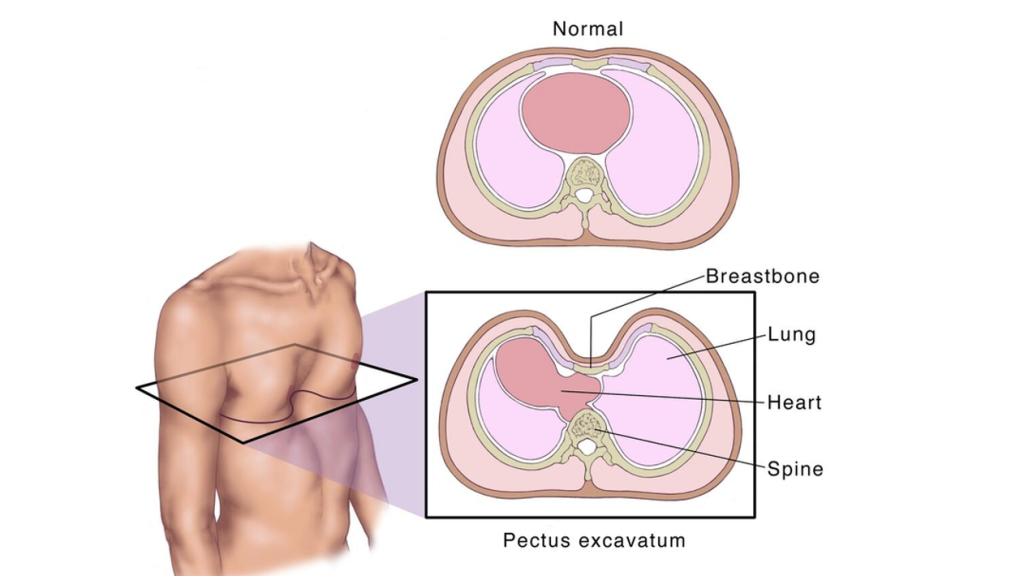-
Ask the Mayo Mom: Surgical options to repair pectus excavatum

Pectus excavatum is a condition where a person's breastbone is sunken into the chest. While the sunken breastbone is often noticeable shortly after birth, the severity of pectus excavatum typically worsens during the adolescent growth spurt.
"The initial diagnosis is often based on appearance," explains Dr. Denise Klinkner, a pediatric surgeon at Mayo Clinic Children’s Center and practice chair of the Division of Pediatric Surgery at Mayo Clinic. "Then when we try to grade the severity, using what's called the Haller index."
The Haller index is calculated by measuring the width of the chest and dividing that width by the distance between the sternum and the vertebral column. This calculation can be performed using a chest X-ray or chest CT scan.
In severe cases of pectus excavatum, the breastbone may compress the lungs and heart. Signs and symptoms can include:
- Decreased exercise tolerance.
- Rapid heartbeat or heart palpitations.
- Recurrent respiratory infections.
- Wheezing or coughing.
- Chest pain.
- Heart murmur.
- Fatigue.
- Dizziness.
Surgery can correct the deformity.
The two most common surgical procedures to repair pectus excavatum are known by the names of the surgeons who first developed them:
- Nuss procedure
This minimally invasive procedure uses small incisions placed on each side of the chest. Long-handled tools and a narrow fiber-optic camera are inserted through the incisions. A curved metal bar is threaded under the depressed breastbone, to raise it into a more normal position. In some cases, more than one bar is used. The bars are removed after two or three years. - Ravitch technique
This older procedure involves a much larger incision down the center of the chest. The surgeon removes the deformed cartilage attaching the ribs to the lower breastbone and then fixes the breastbone into a more normal position with surgical hardware, such as a metal strut or mesh supports. These supports are removed after 12 months.
Many pain control options are available after surgery to improve recovery. Cryoablation temporarily freezes the nerves to block pain after surgery, and can help with recovery and decrease postoperative pain for four to six weeks.
"With the addition of cryotherapy, patients need less narcotic pain medicine and have been able to go home the next day after surgery," says Dr. Klinkner.
On the Mayo Clinic Q&A podcast, a special edition of "Ask the Mayo Mom" focuses on minimally invasive pectus repair in children. Dr. Angela Mattke, a Mayo Clinic pediatrician and host, is joined by Dr. Klinkner to discuss options for pectus excavatum repair and what patients can expect after surgery.
For more information and all your COVID-19 coverage, go to the Mayo Clinic News Network and mayoclinic.org.

Related Articles







